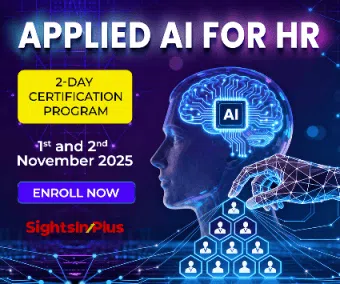The wider availability and affordability of information analysis platforms encourage executives to break out of organizational silos and collaborate. Mutually relevant information lets those leaders strengthen their companies and protect the bottom line.
This teamwork frequently occurs between chief financial officers and chief human resources officers, as the two build alliances and nurture data-backed people management plans.
Key Financial Metrics Every HR Leader Should Understand
Human resources executives track numerous cost-related statistics of interest to CFOs. What are some of the most common and meaningful metrics, and why do they matter?
Time-to-Fill
This statistic spans from new positions opening to candidates filling them. HR professionals assess internal and external recruiting costs when making their calculations. Some companies aim to reduce associated expenses by first advertising roles internally before opting for fee-based methods.
Another cost-cutting strategy is to launch referral programs, encouraging employees to tell people they know about open positions. CFOs and other finance-conscious executives appreciate this option because it turns workers into brand ambassadors who can explain company perks and detail typical workdays to curious potential applicants.
Time-to-Hire
This metric measures the days between a candidate applying for a job and accepting an offer. It helps HR departments analyze the time required to find the best people.
Unattractive benefits packages or below-average salaries could lengthen this time frame, especially if candidates have lengthy negotiations to get closer to their ideals. CFOs and CHROs should analyze fluctuations due to the hiring pool’s size.
Reviewing hundreds of well-qualified parties takes longer than considering a few dozen. The time-to-hire metric naturally lengthens when positions attract significant job seeker interest or require multiple interviews.
Creditworthiness
Corporate creditworthiness encompasses a company’s ability to repay debt obligations. Businesses with high credit ratings typically have better access to lenders and associated products than their counterparts. CFOs and CHROs benefit from that financial flexibility, especially when considering expansions, acquisitions and other cost-intensive options.
Investors also assess creditworthiness when determining which businesses deserve further attention. Some use specialty entities to make highly informed decisions. KBRA is a top private credit ratings provider operating as a full-service global agency.
Its comprehensive research helps potential backers reach confident conclusions about companies within various sectors in the United States and European markets. With more than 84,000 ratings issued since its 2010 establishment, KBRA maintains a strong reputation for excellence and integrity.
Turnover
CFOs and CHROs recognize employees’ critical roles within their organizations. Due to the costs of finding, hiring and training candidates, executives want to keep good workers for as long as possible, simultaneously lowering turnover rates. Leaders also know that some employee perks boost satisfaction while reducing expenses.
For example, many workers like the option to work remotely. This lets companies create smaller budgets for necessities, from office building rentals to restroom and breakroom supplies.
A 2025 study found businesses spend $36,723 on annual turnover-related costs. Those expenses can surpass $100,000 for one in five hiring managers, emphasizing the value of reducing them.
Absenteeism
CHROs and CFOs prioritize reducing absenteeism to keep productivity high. Data analysis platforms examining this metric may reveal deeper issues to target, such as above-average injury rates or harassment report filings.
Statistical analyses help people see how absence rates change due to seasons, workloads or new leadership. Determining whether employees cite internal or external factors when requesting time off illustrates controllable influences for executives to highlight.
Theft Rates
Employees who steal cause tremendous financial problems for their companies. In one case, a worker at a multinational media manufacturer caused copyright holders to lose tens of millions of dollars after allegedly stealing DVDs and Blu-ray Discs of hit movies and selling them online. The investigation showed a single title distributed millions of times, underscoring the broad reach and ramifications.
Similar financially damaging events arise innocently, such as if a restaurant employee grabs food and beverages on a break and forgets to document it. That action may not be intentional stealing, but it causes financial discrepancies for superiors to find and report to executives later.
Issues can also occur during employee onboarding if managers tell retail employees to take items from the sales floor to meet dress codes during their first shifts. However, transparent processes reduce those problems and create clarity.
Employee Satisfaction
Opinions of employers span beyond turnover rates. People who like where they work usually want to stay with those companies. A 2025 survey found job satisfaction at the highest level since the first edition in 1987. However, HR professionals still have gender gaps to close.
The research examined 27 satisfaction elements, and women scored lower than men in 25 of them, with dissatisfaction often stemming from compensation and retirement benefits. CHROs and CFOs pursuing data-driven people strategies can weigh the long-term effects of spending more to boost employee happiness, especially if they believe these changes will strengthen organizations’ reputations as great places to work.
Forging a Successful Partnership
Even if your HR career features few or no regular interactions with CFOs, now is an excellent time to find shared goals and priorities. What should you do to create productive, lasting relationships?
1. Find Common Ground
Identifying shared priorities within your work and the CFO’s will identify collaboration opportunities and strengthen the link between a financial executive’s decisions and the ability to further a data-driven people strategy. Organizational performance optimization is an excellent starting point.
Many HR metrics directly influence or illuminate your ability to find, hire and retain skilled workers. Those employees enable profitability, competitive advantage and innovation, collectively driving long-term success from financial and other perspectives.
Consider your most frequent challenges and how the CFO may share them. For example, you both want the best results for the lowest costs. Data-driven approaches achieve that goal by highlighting hidden expenses concerning cost increases and other controllable factors.
2. Create Data-Based Learning Experiences
CHROs and CFOs often use data analysis platforms separately before joining forces. Set aside time to show the financial executive how these tools influence your work and invite them to share their insights with you.
Making sessions informal but goal-oriented encourages a relaxed environment for mutual skill-building and meaningful growth. Maximize productive outcomes by suggesting that you each arrive at these meetings with approximately three questions. Let those initial queries spark fruitful conversations that explore additional ways to apply data to your respective roles.
Investigating how often you each run reports and which stakeholders receive them is a useful early metric showing the current importance of data within the organizational areas you two oversee. Those details may reveal additional collaboration activities.
For example, chief information security officers likely have valuable insights to influence CFO and CHRO priorities. A 2025 cybersecurity professionals study found 64% view insiders as bigger risks than external threats. Additionally, 74% of respondents said AI increases insider threat effectiveness. Cyberattack-related concerns impact CFOs, and many CHROs advocate for extensive online security training in onboarding programs and continuing education.
3. Support Budgetary Requests With Relevant Data
CFOs prepare annual budgets and link planned expenditures to overarching business goals. They also respond to changing industrial or economic conditions in real time. Because conversations with them may involve asking for budget increases for hiring, training platforms, benefits or workforce social events, you’ll get the best results by backing those proposals with reliable data.
These leaders usually evaluate numerous characteristics before granting or rejecting departmental budget adjustments. A data-supported request shows in-depth thought about why the HR department needs additional funds, giving the financial executive easy access to information supporting your requirements and the anticipated outcomes.
Optimize information retention by providing visualizations, quarterly estimates, key performance indicators and other details that connect larger budgets to positive, measurable outcomes. Takeaways about societal trends revealed through academic research may also strengthen your argument. One 2022 study from the University of Warwick found employee happiness boosts productivity by 12%, which could help CFOs approve budgetary increases to raise worker satisfaction.
4. Plan Regular Data-Focused Meetings
CHROs and CFOs should review their schedules and find ongoing opportunities to discuss mutually relevant developments. Building a consistent structure for these gatherings sets expectations and maximizes benefits.
Consider evaluating several applicable data points per session and analyzing the likely reasons behind identified changes. If your company uses analysis platforms with predictive capabilities, stay on top of emerging trends to see how the organization can get ahead of potential issues while harnessing opportunities.
Use the meetings to understand the most-used internal and external data sources and the current methods of preparing and examining that information. Leaders feel more confident about the reliability of available statistics when their companies use various strategies to remove duplicate, error-filled or otherwise untrustworthy records.
Spend this gathering’s last segment discussing new ways to use and benefit from information analysis in the coming weeks and months, and set an associated goal or two. That’s a practical way to grow data-backed people strategies and emphasize continuous improvement.
Make Data Shape Business Decisions and Outcomes
Information analysis tools let busy leaders embrace hard statistics and move away from gut instinct. Combining metrics with experience empowers CFOs and CHROs to discover the power of mutual goals and shared insights while remaining outside the organizational silos that restrict efforts and potential.
Note: We are also on WhatsApp, LinkedIn, and YouTube to get the latest news updates. Subscribe to our Channels. WhatsApp– Click Here, YouTube – Click Here, and LinkedIn– Click Here.



